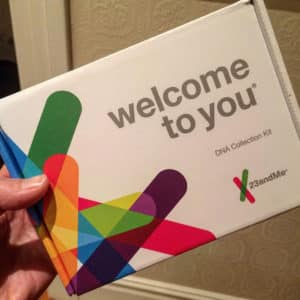In 2006, Paul Cusenza, Linda Avey, and Anne Wojcicki, worked together to build a new company that would provide genetic testing and interpretation of those results. At the time, Wojcicki was married to Google co-founder Sergy Brin. Google invested $3.9 million in the company.
The company offered a new genetic testing service which not only allowed the discernment of ancestry-related results but also offered risk assessment for possible health-related problems due to one’s ancestry. The FDA considers genetic testing “medical devices” , which means that FDA approval was necessary to market them. 23andMe failed to respond to the FDA’s concerns and, for a time, was forced to release only ancestry-related results. 
Within a few years, however, the FDA and 23andMe, worked out their “misunderstandings” and approval to continue to sell the saliva-based kits was given. As of April 2017, FDA allowed marketing of 23andMe Personal Genome Service Genetic Health Risk (GHR) tests for 10 diseases or conditions. This marks the first time that the FDA has allowed direct to consumer tests to be conducted with FDA approval.
The company markets their product in the US, the UK, and Canada. As of September of 2017, the company has been listed as having a value of $1.5 billion. More than 2 million kits have been sold in the US alone.
In 2015, the company made a decision to NOT supply pharmaceutical companies with raw data, but rather to pursue the development of new drugs themselves.
Company headquarters are still located in Moutain View, California. 
In 2006, Paul Cusenza, Linda Avey, and Anne Wojcicki, worked together to build a new company that would provide genetic testing and interpretation of those results. At the time, Wojcicki was married to Google co-founder Sergy Brin. Google invested $3.9 million in the company.
The company offered a new genetic testing service which not only allowed the discernment of ancestry-related results but also offered risk assessment for possible health-related problems due to one’s ancestry. The FDA considers genetic testing “medical devices” , which means that FDA approval was necessary to market them. 23andMe failed to respond to the FDA’s concerns and, for a time, was forced to release only ancestry-related results. 
History
Within a few years, however, the FDA and 23andMe, worked out their “misunderstandings” and approval to continue to sell the saliva-based kits was given. As of April 2017, FDA allowed marketing of 23andMe Personal Genome Service Genetic Health Risk (GHR) tests for 10 diseases or conditions. This marks the first time that the FDA has allowed direct to consumer tests to be conducted with FDA approval.
The company markets their product in the US, the UK, and Canada. As of September of 2017, the company has been listed as having a value of $1.5 billion. More than 2 million kits have been sold in the US alone.
In 2015, the company made a decision to NOT supply pharmaceutical companies with raw data, but rather to pursue the development of new drugs themselves.
Company headquarters are still located in Moutain View, California. 
